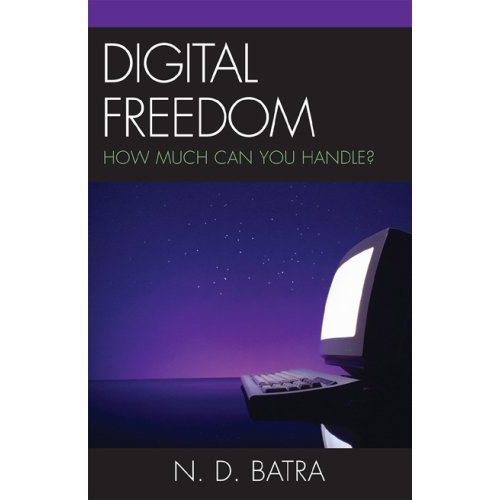Battle of ideas shall continue
CYBER AGE - ND BATRA
From The Statesman
Before the global financial meltdown began last September, the whole world watched with fascination the unstoppable rise of China as a model of economic progress. China as a global workshop ~ that exports, exports, and exports ~ became an exemplar of the energy born of nationalistic commercialism.
Except for those pesky Tibetans and their conniving agents abroad, it looked China had become a global brand with a single dominant story of harmony and peaceful rise. But now because these bankrupt Americans and Europeans are not buying much, many factory sites in China look like a vast wasteland. The euphoria of Asian values and uniqueness is no longer visible. China of course is not crumbling like a cookie but it is also not speeding like a shining silver bullet train.
China as an idea has to compete with others in the international marketplace of ideas. So you can never say that the battle of ideas has been finally won. For example, we did not realise that the end the Soviet Union was not the end of the battle of ideas but rather the beginning of new ones. Think of history as a dynamic landscape where the battle of ideas continues.
Some people, especially those trained in propaganda believe that all that a country needs is a new image and therefore it must re-brand itself. It is not that easy. Even a most authoritarian nation cannot control the message and its image even though it may be the sole source of information about itself. Of course you can never control the image of an open society because there are so many independent actors, institutions and corporations competing for attention.
For example, the Slumdog Millionaire image of India can never be done away. When some of my colleagues ask me as to how accurate is the portrayal of India in the movie, I say it’s a beautiful and accurate “misrepresentation” of India. But Mumbai slumgdogs are better than Mother Teresa’s hopeless downtrodden. Add to this tapestry, the millions of Indians who are using their mobile phones to become entrepreneurs; and the Tata Nano; and the rise of silicon whiz kids in Bangalore, Hyderabad, Gurgaon, Kolkata, et al, and you have a throbbing compelling image of India.
Similarly, Hollywood, IBM, Google, Microsoft, Wal-Mart and all others contribute to the US image abroad. But now you add to this mélange the financial meltdown, increasing joblessness, and the bloody news from Afghanistan! The US image abroad is the materialisation of what the USA is doing at home and abroad.
Foreigners who see only Hollywood violent movies and video games are likely to have a distorted image of the USA. But if you bring them to university campuses, cultural centres, and workplaces, you would see the image of the USA in their minds change radically. Keeping the dynamic nature of the emergent image, it should not be difficult to understand why the public perception of the USA differs from one country to another. The image depends upon the quality and the extent of its presence and its usefulness to the host country.
Even the smartest public diplomacy campaign won’t change perceptions overnight especially when America is deeply engaged in multiple missions abroad. Events might occur beyond its control, which could further blur the image in some countries. China’s presence in the USA is huge but poor quality China-made toys, tainted pet foods and defective tyres have shattered its image of a reliable manufacturer. No amount of public relations or threat of going to WTO as it recently tried to do with India over toys would help China unless it realises that good products are manufactured by countries where the Press is free, where there is political and corporate transparency.
The always-on 24-hour global communication, blogs, instant messaging, and news cycles, make it impossible for practitioners of public relations to devise a central strategy to impose a message control, as it can be done in advertising campaigns for a product or a political candidate. In an environment of unbridled communication, you might still control the message, but you cannot control the meaning when instant alternative interpretations are available.
Each nation is different, so what works in Indonesia may not work in Pakistan. The challenge is to find the right vehicle to carry the message for a specific local audience. Public diplomats must use local leaders to champion and advance their cause and they should do so in such a manner that it makes the local people feel good while at the same time generating goodwill towards the country that is using information culture to foster goodwill. Hollywood is still the best cultural export, but US popular culture, due to proliferation of senseless violence and explicit sex, creates negative impressions in foreign audiences, in spite of the fact the world has been spending billions of dollars importing American entertainment.
The paradox is that in spite of negative feelings about American popular culture that it depicts profanity, nudity, mayhem and crime, the popularity of mass culture, even in the Islamic world, remains strong. In countries like India and the USA, corporations, educational institutions, and non-profits organisations represent most precious values such as individual initiative, innovativeness, entrepreneurship, freedom of speech, and competition. Google and Apple, for example, embody as much of what America stands for as does Hollywood.
India’s massive general election starting 16 April in which an electorate of 714 million would participate makes the idea of India very persuasive and appealing. I would rather have free and fair elections in India than a glamorous summer Olympics.
(ND Batra blogs at http://globaldiplomat.blogspot.com and teaches communications at Norwich University.)
Tuesday, March 24, 2009
China, US, India
at Tuesday, March 24, 2009 Posted by Narain D. Batra
Topics
America Today,
China,
Culture,
Freedom,
Globalization,
India
![]()
Subscribe to:
Post Comments (Atom)

No comments:
Post a Comment